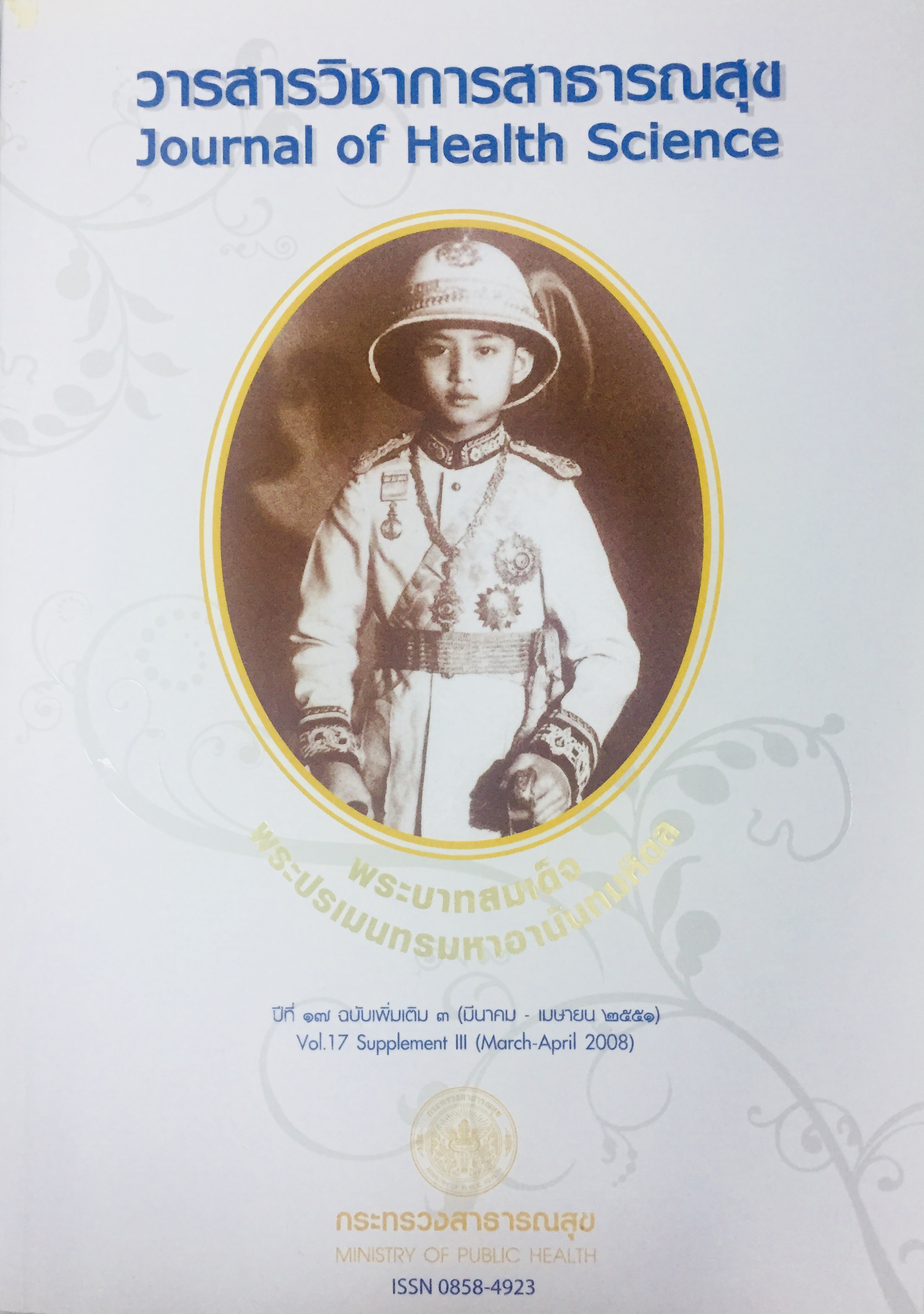รูปแบบพฤติกรรมผู้นำของนายกองค์การบริหารส่วนตำบลในเขตพื้นที่จังหวัดจันทบุรี
คำสำคัญ:
รูปแบบพฤติกรรมผู้นำ, องค์การบริหารส่วนตำบล, จังหวัดจันทบุรี, การมีส่วนร่วมของประชาชนบทคัดย่อ
การศึกษาครั้งนี้มีวัตถุประสงค์ เพื่อศึกษารูปแบบพฤติกรรมผู้นำของนายกองค์การบริหารส่วนตำบล และ เพื่อศึกษาลักษณะพฤติกรรมผู้นำประเภท "เก่งงาน และ เก่งคน" ของนายกองค์การบริหารส่วนตำบลในเขต พื้นที่จังหวัดจันทบุรี รูปแบบการศึกษาเป็นการวิจัยแบบพรรณนา (descriptive research) โดยการสำรวจ ทัศนะของผู้ที่อยู่ใกล้ชิด ประชากรที่ศึกษา ได้แก่ บุคลากรที่ปฏิบัติงานร่วมกับนายกองค์การบริหารส่วน ตาบลและประชาชนในพนท์ กลมตวอยางองค์การบริหารสวนตาบล(อบต.) เลือกและสมด้วยวิธสมอยางงาย อย่างน้อยอำเภอละ 1 แห่งโดยให้ครอบคลุมทุกระดับชั้นของ อบต. จำนวน 13 แห่ง กลุ่มตัวอย่างประชากรเลือกแบบเจาะจง และแบบบังเอิญ ประกอบด้วยบุคลากรของ อบต.ทั้งในส่วนข้าราชการประจำและการเมือง เจ้าหน้าที่สาธารณสข อาสาสมัครสาธารณสข และประชาชนในพืนทีรับผิดชอบของอบต. แห่งละ 10 คน จำนวน130 คน เครื่องมือที่ใช้ในการวิจัยเป็นแบบสอบถามวัดพฤติกรรมที่ผู้วิจัยสร้างขึ้น ตามรูปแบบการวัด พฤติกรรมผู้นำ LBDQ (Leadership Behavior Desciptive Questionnaire) ของมหาวิทยาลัยโอไฮโอแห่งประเทศสหรัฐอเมริกา โดยพิจารณาการแสดงออกทางด้านผู้นำของนายกองค์การบริหารส่วนตำบล 2 ด้าน คือ ด้านโครงสร้างการริเริ่ม (initiating structure : เน้นงาน) และด้านจินตอาทร (consideration : เน้นคน) รูปแบบพฤติกรรมผู้นำพิจารณาตามรูปแบบ จตุ-จตุรัสพฤติกรรมผู้นำของมหาวิทยาลัยแห่งรัฐโอไฮโอ (The Ohio State Leadership Quadrants) ดำเนินการเก็บข้อมูลในช่วงเดือน กุมภาพันธ์ - มีนาคม 2551 การ วิเคราะห์ข้อมูลใช้ค่าสถิติ จำนวน ร้อยละ ค่าเฉลี่ย และ การวิเคราะห์องค์ประกอบ (factor analysis)
พบว่า นายกองค์การบริหารส่วนตำบล ในเขตพื้นที่จังหวัดจันทบุรี มีพฤติกรรมผู้นำที่ปรากฏขึ้นจริงใกล้เคียงกับสิ่งที่ผู้ใกล้ชิดคาดหวังไว้ (ตามพฤติกรรมที่ควรจะเป็น) โดยพบว่า รูปแบบพฤติกรรมผู้นำที่เป็นจริงแบ่งผู้นำได้เป็น 2 ประเภทคือ ร้อยละ 46.15 เป็นผู้นำประเภท "เก่งงาน และเก่งคน" และ ร้อยละ 53.85 เบนผนามระเภท เมเกงงาน และ เมเกงคน" และพบวาผเกลชดสวนเหญ คาดหวงผนาบระเภท เกงงาน และเก่งคน" ในส่วนขององค์ประกอบพฤติกรรมผู้นำประเภท "เก่งงาน และ เก่งคน" พบว่า ลักษณะพฤติกรรมสำคัญ มีอย่างน้อย 8 รายการ เรียงลำดับความสำคัญ ตามน้ำหนักขององค์ประกอบได้แก่ ลำดับที่ 1 สนับสนุนให้มีเวทีแลกเปลี่ยนความคิดเห็นหรือประชาคมในชุมชน (0.50) ลำดับที่ 2 ประสานกับหน่วยงานอื่นๆ เพื่อการพัฒนาในพื้นที่ (0.47) ลำดับที่ 3 เป็นผู้มีเหตุผลและสามารถให้เหตุผลแก่ผู้ร่วมงานหรือ ผู้อื่นได้อย่างชัดเจน (0.42) ลำดับที่ 4 ปกครองผู้ใต้บังคับบัญชาหรือผู้ร่วมงานโดยใช้ กฎ ระเบียบ ข้อบังคับ ฯลฯ ของ อบต. เป็นหลก (0.42) ลาดบท 5 สามารถวเคราะหหรอวนจฉยเรองตางๆ เดดกตอง (0.39) ลำดับที่ 6 ปฏิบัติงานด้วยความเชื่อมั่นในตนเอง (0.39) ลำดับที่ 7 ตัดสินใจสั่งการงานได้อย่างรวดเร็วและ เหมาะสม (0.35) และลำดับที่ 8 นำเอาแนวคิดใหม่ ๆ มาทดลองใช้ในการปฏิบัติงาน (0.33) ดังนั้นการ พฒนาศกยภาพนายกองคการบรหารสวนตาบล หรอสนบสนนเท อบต.มผนาแบบ "เกงงาน และ เกงคน" ซึ่งมีลักษณะพฤติกรรมที่ให้ความสำคัญกับกระบวนการพัฒนาแบบมีส่วนร่วม จะส่งผลดีต่อการพัฒนาสุขภาพ ที่ต้องระดมพลังทั้งสังคมในทุกระดับเพื่อขับเคลื่อนการเปลี่ยนแปลงสังคมและระบบสุขภาพให้เป็นไปตาม จดมงหมาย ด้วยการม์สวนรวมปกับต์การและรวมรบผัดชอบของ องค์กรปกครองสวนท้องถิน และภาค เครือข่ายการพัฒนาทั้งภาครัฐ ภาคเอกชน และประชาชนในพื้นที่
Downloads
ดาวน์โหลด
เผยแพร่แล้ว
วิธีการอ้างอิง
ฉบับ
บท
การอนุญาต
ลิขสิทธิ์ (c) 2018 วารสารวิชาการสาธารณสุข

This work is licensed under a Creative Commons Attribution-NonCommercial-NoDerivatives 4.0 International License.







